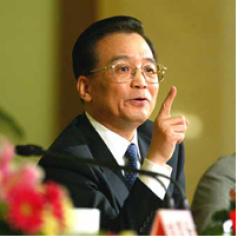
“China will respond in a measured way to foreign pressure, but doesn’t want to be seen as caving in and reacting immediately when pressed,” says Guan Anping, a Beijing-based securities lawyer who has high-level contacts in the government.
U.S. politicians have been clamoring for the Treasury Department to label China a currency manipulator, arguing in a report due out this month that a weak renminbi drives the country’s big trade deficit with China. Wen dismissed those calls, telling the National People’s Congress that the Chinese currency has been a stabilizing force.
Pressure for a change is building in China, though, analysts say. Pegging the renminbi to the dollar ties China to the U.S.’s low interest rates and risks fueling a bout of asset-price inflation, says Paul Schulte, a strategist at Nomura Securities Co. in Hong Kong.
Yifan Hu, Hong Kong–based chief economist for Citic Securities Co., predicts a three-stage reform by the government: dropping the current exchange-rate peg of 6.83 to the dollar for a peg to a basket of currencies, widening the daily trading band to plus or minus 0.5 percent and adopting a managed float that lets the renminbi appreciate by 3 to 5 percent a year. Washington politicians hoping for faster change will have to be patient, Hu says: “Large one-off revaluations are unlikely.”





